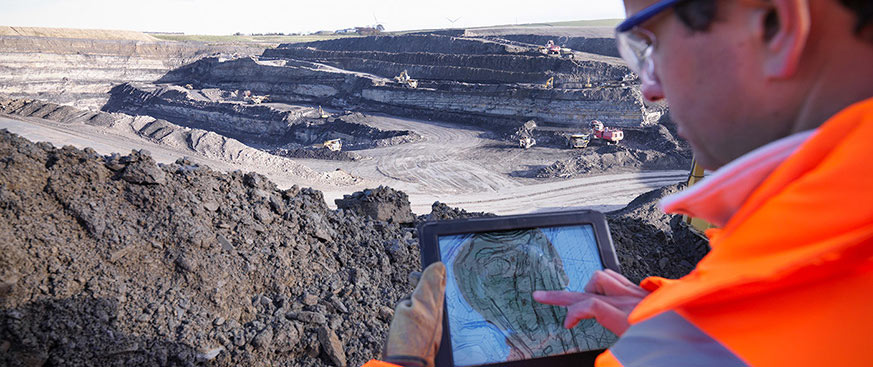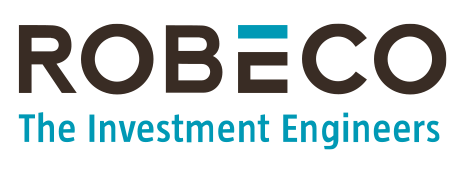Miners are rising to the challenge of making the industry more sustainable as demand grows for metals and minerals.
Speed read
- Rising awareness of need for water conservancy in mining operations
- Mixed results with commitments to improve tailing dam safety
- A complex reality for the different approaches to mine retirement
There is a growing awareness of responsibilities regarding water use, safety and environmental restoration, says Engagement Specialist Cristina Cedillo Torres.
Robeco’s Active Ownership team is one year into a three-year engagement program with 13 leading mining companies to improve standards. The industry is crucial to meet growing demand for the metals and minerals needed to create low-carbon solutions, such as cobalt and lithium for electric car batteries.
It has, however, been beset with problems such as the fatal collapse of tailings dams – large embankments containing the waste products of mining – along with excessive water use and a poor record in cleaning up the land once mining has finished. “As the world faces the challenge to transition to a low-carbon world, clean technologies are leading to booming demand for materials such as aluminum, copper and nickel,” says Cedillo Torres. “In other words, the energy transition will be built with metals and minerals.”
“The soaring demand reminds us that mining activities often have significant adverse impacts on natural landscapes, disrupt ecosystems, and divert scarce water resources to the detriment of local communities. As responsible investors in the mining industry, our engagement program aims to encourage our investee companies to minimize the environmental footprint of their operations.”
Water conservation
One under-reported issue is how much water is needed to make mining possible. “Our first year of engagement has found that there is a high level of awareness of the importance of water use management among most of the mining companies in the peer group,” says Cedillo Torres.
“Due to the operational importance of enhancing efficiency, most of them are undertaking efforts to re-use water and minimize consumption.”
“However, the majority of companies disclose water use performance at the group or entity level, and only a minority provide data at the asset level. Asset-level disclosures are important because the sustainability of water consumption levels is dependent on the specific hydrological characteristics where a mine operates.”
Getting better data
To try to get better data, Robeco has joined a campaign by the Carbon Disclosure Project (CDP) that has asked eight of the companies in the engagement group to complete an annual questionnaire about its water use.
“One of the main areas of concern are the adverse impacts of mining operations on water availability for all users of the waterbody,” she says. “This requires companies to ensure that the water balance at the catchment level is sustainable.”
“It is encouraging to find that a growing number of companies in the peer group are conducting baseline risk assessments at the entire basin level, effectively adopting a catchment level approach. This is the first step to being able to measure and report on the impact of operations on water availability at the catchment level, and in setting targets to mitigate adverse impacts on the overall water body and its users.”
Tailings dam safety
Safety is another issue following a tailings dam burst in Brumadinho, Brazil in 2019 that killed 270 people. That followed a similar dam collapse in Mariana, Brazil in 2015 which 19 people died. Aside from the death toll, the Mariana incident spread pollution across 668 kilometers of watercourses.
“Following collaborative engagement under the Investor Mining and Tailings Safety Initiative, mining companies started disclosing for the first time the full inventory of tailings storage facilities they operate,” says Engagement Specialist Sylvia van Waveren. “With the exception of two companies, all other miners in the peer group have disclosed details of their tailings dams.”
A Global Industry Standard on Tailings Management was launched in 2020 by the International Council on Mining and Metals (ICMM), the Principles for Responsible Investment and the UN Environment Program. This aims to ensure that miners incorporate not only safety into their dam management, but also environmental and social safeguards.
Low enthusiasm for standards
Mining companies that are members of the ICMM – including eight in the engagement program – have committed to implementing the global standards within the next three years. “However, the enthusiasm to implement the standard among non-ICMM members is less pronounced,” says Cedillo Torres.
“Of the five non-ICMM miners in the peer group, only one of them has so far publicly committed to fully implementing the standard. Particularly critical of the standard are those miners with tailings dams classified as high risk in the severity of environmental and social damage that would occur in the event of failure.”
“Some of the arguments made not to fully implement the standards include the highly demanding number of experts needed, and concerns that critical decisions are no longer taken by management, but are delegated to an independent expert committee. We will continue to encourage companies to implement the global standards on tailings.”
Environmental impacts
Finally, there is the issue of how to clean up mining operations which can leave a considerable blot on the landscape once the resources are depleted. “Best practice tells us that minimizing environmental impacts of mining activities is most successful when they are anticipated before operations have even started, and are subsequently managed throughout the entire life of a mine,” says Cedillo Torres.
“Mine closure plans that are developed early on can be used as a baseline upon which the adequate technologies and measures can be adopted. This can then more easily mitigate any environmental risks during the operational phase and help reduce rehabilitation costs at the end of the mine’s life.”
“Our engagement so far finds a complex reality where mines may follow different asset retirement standards depending on their age and location. More critically, disclosures on this important matter do not provide investors with sufficient information to assess the extent to which companies have appropriate financial assurances to finance the costs of mine closures and land rehabilitation.


